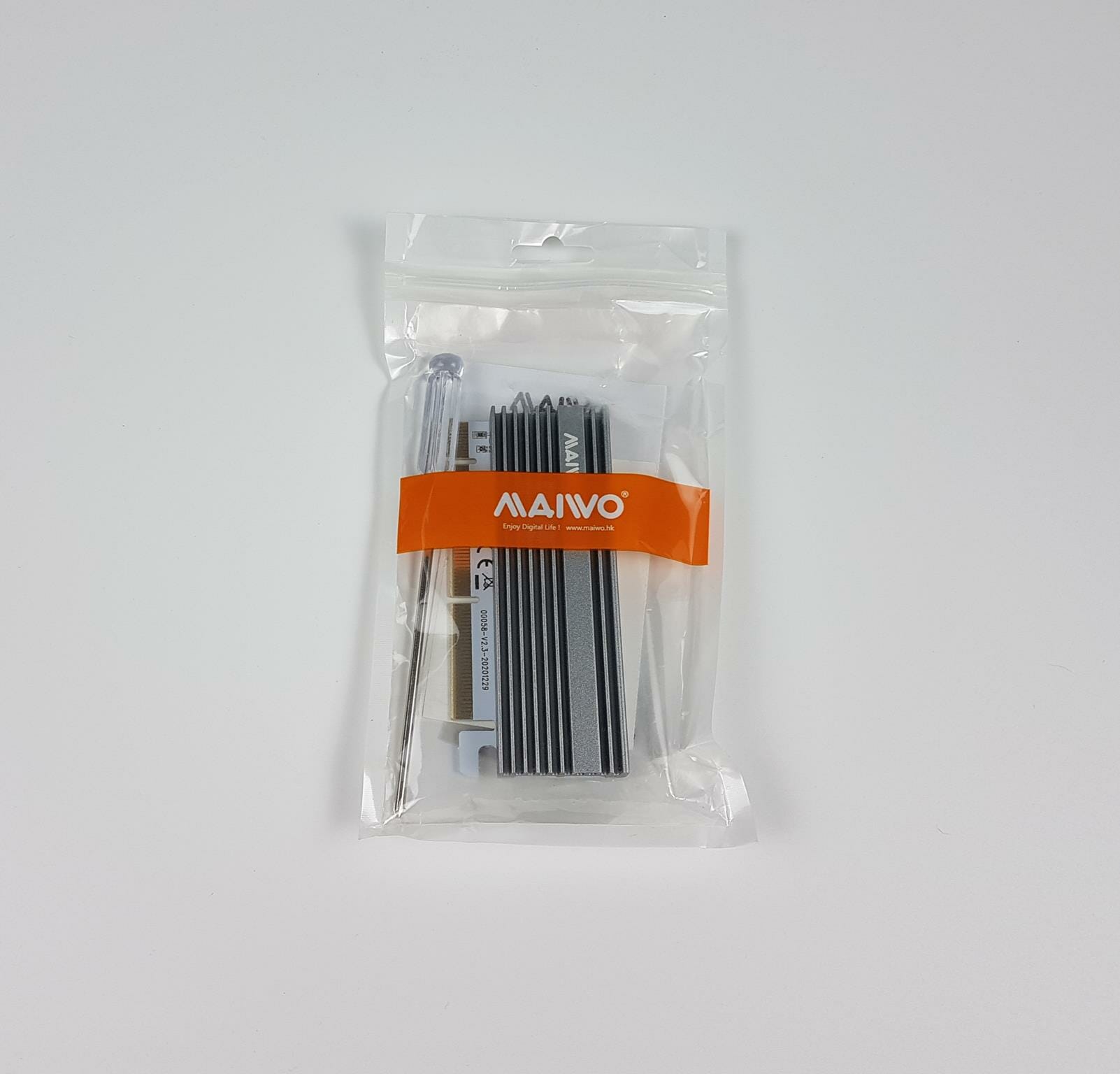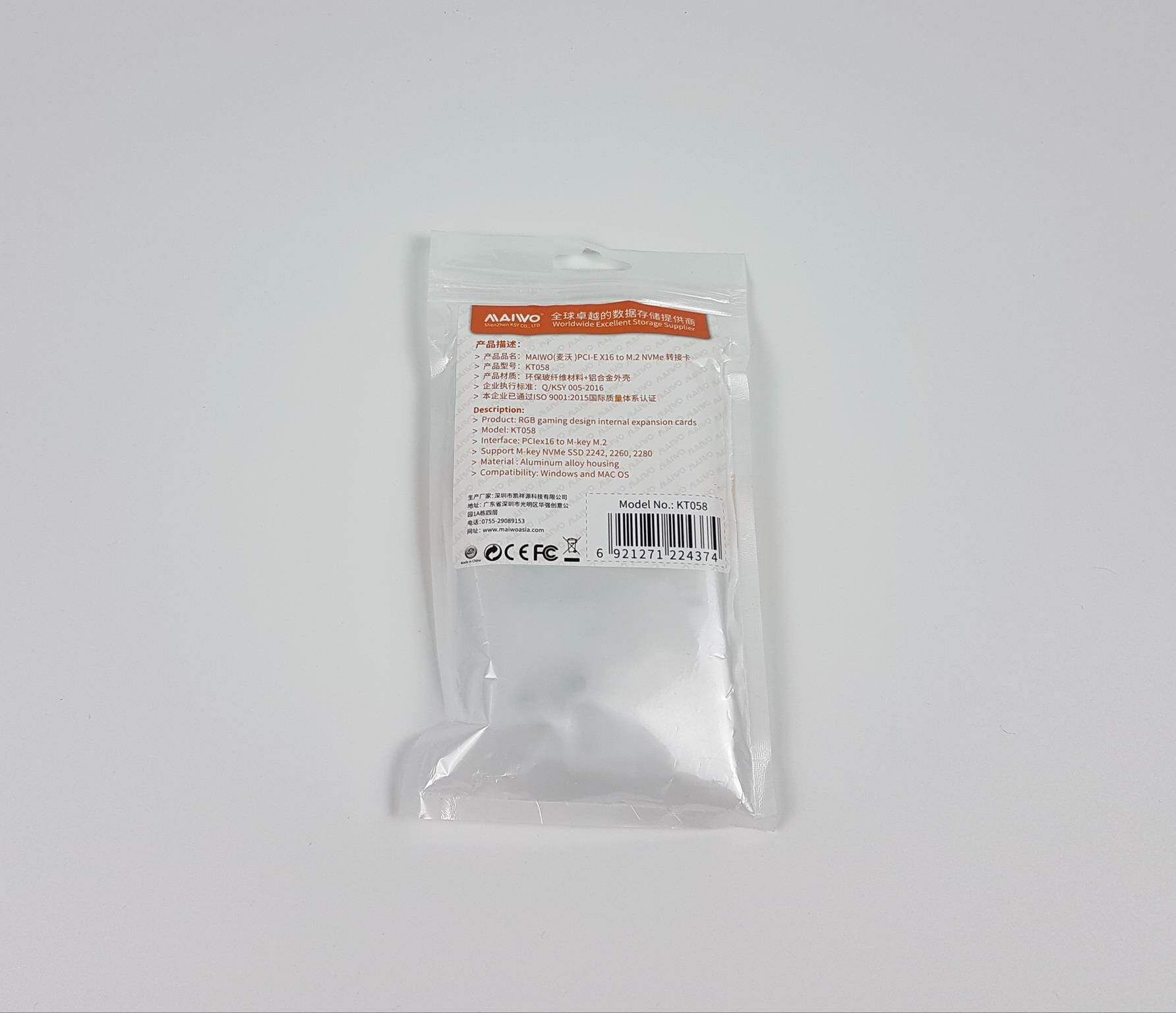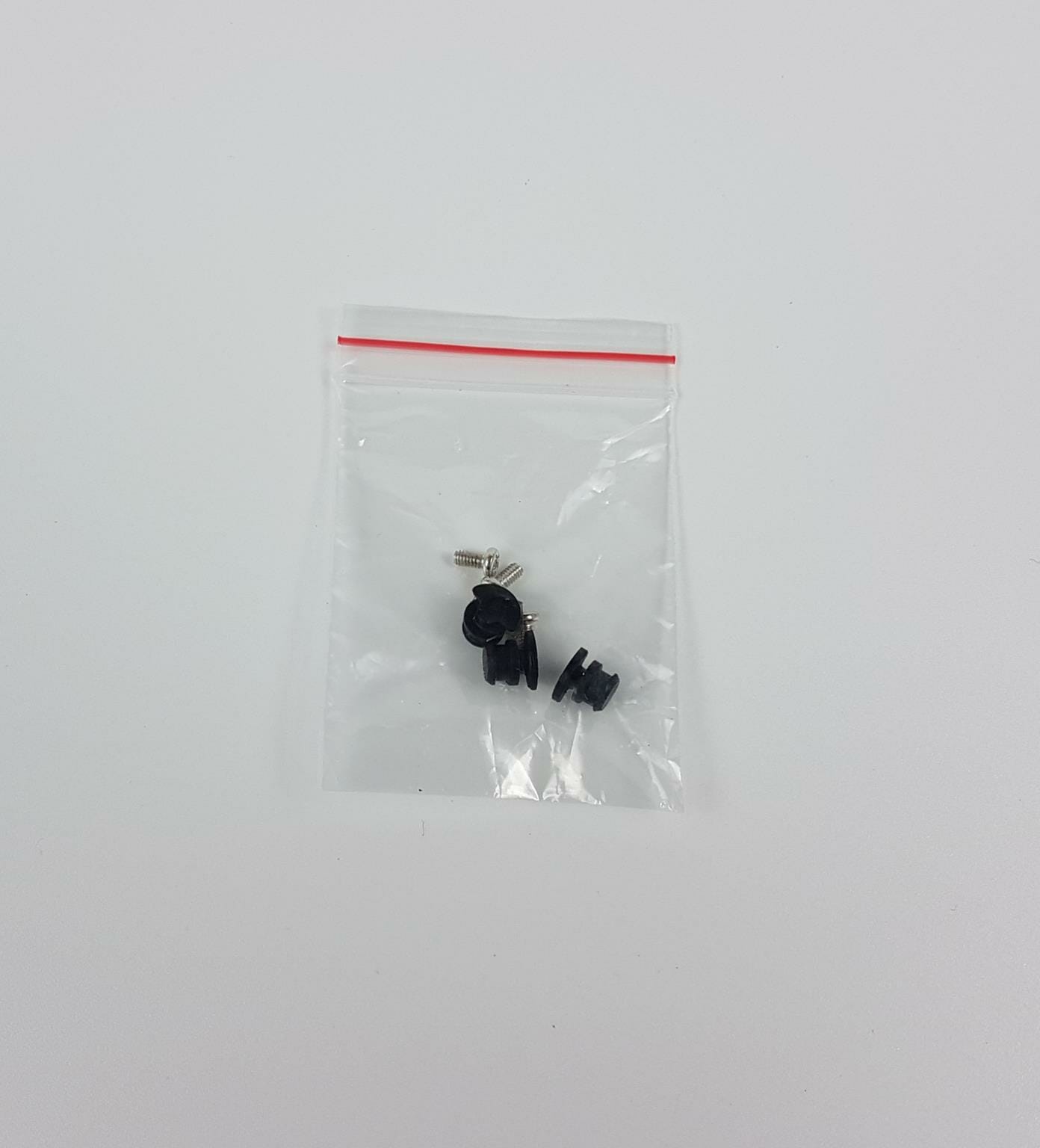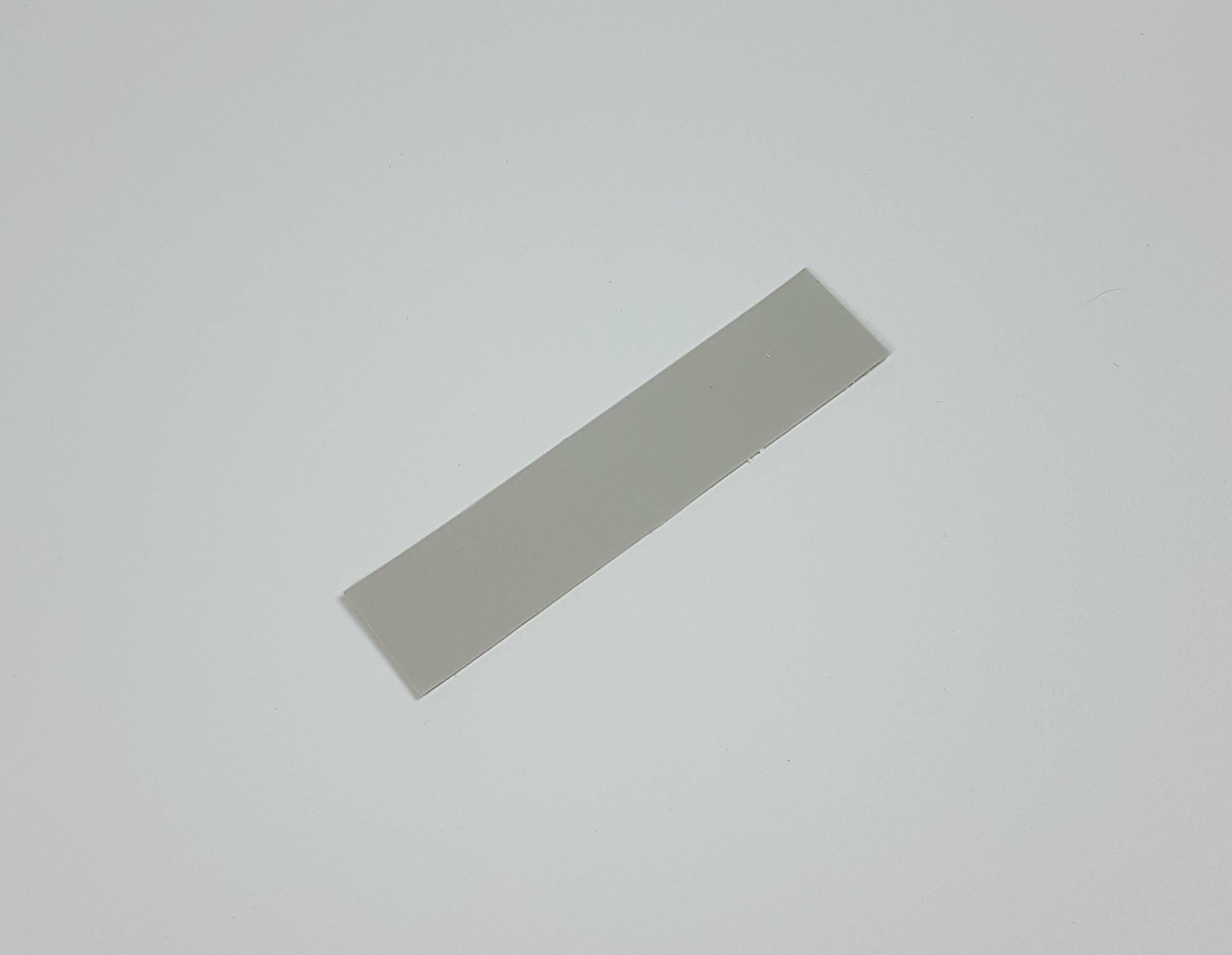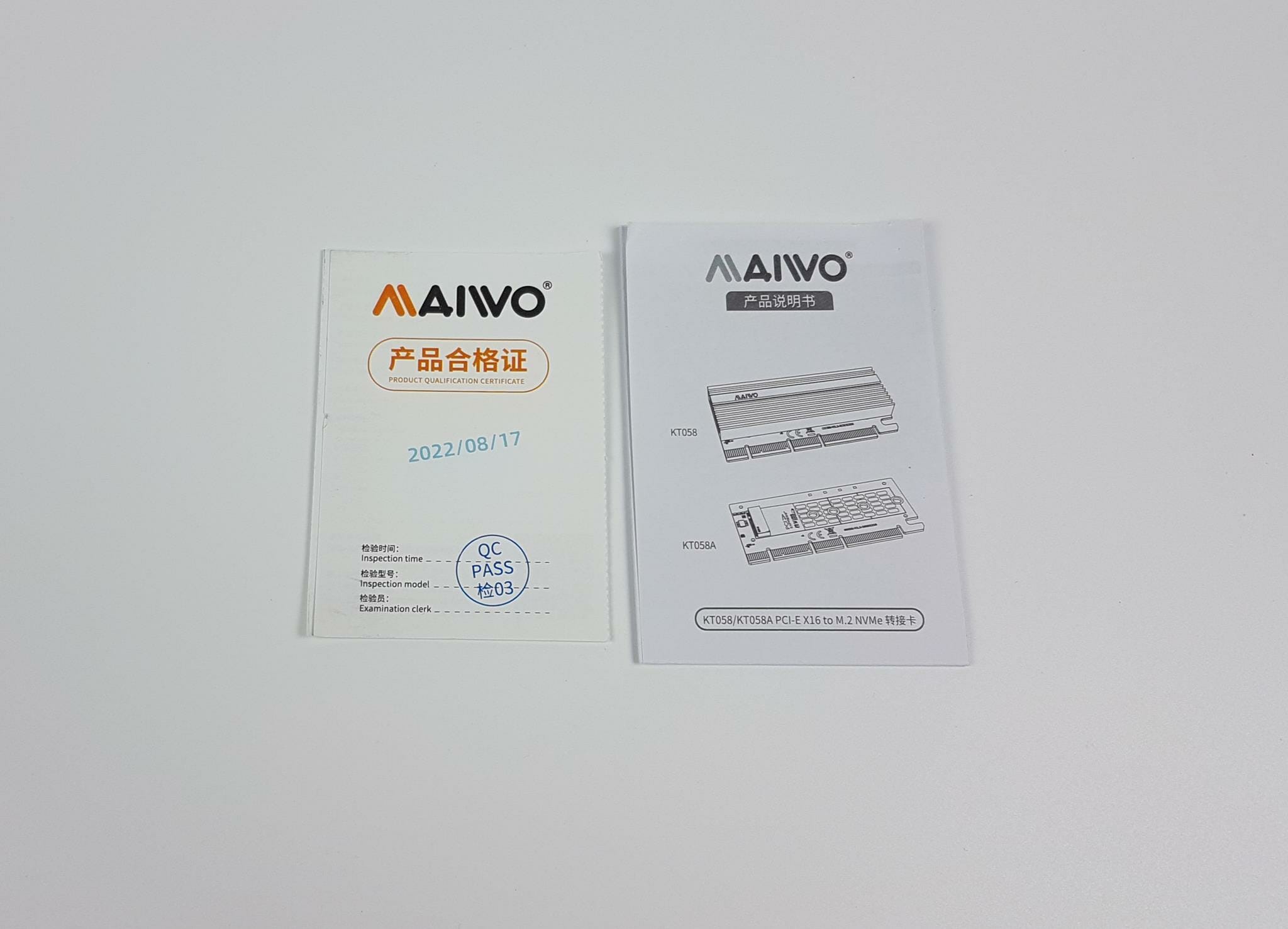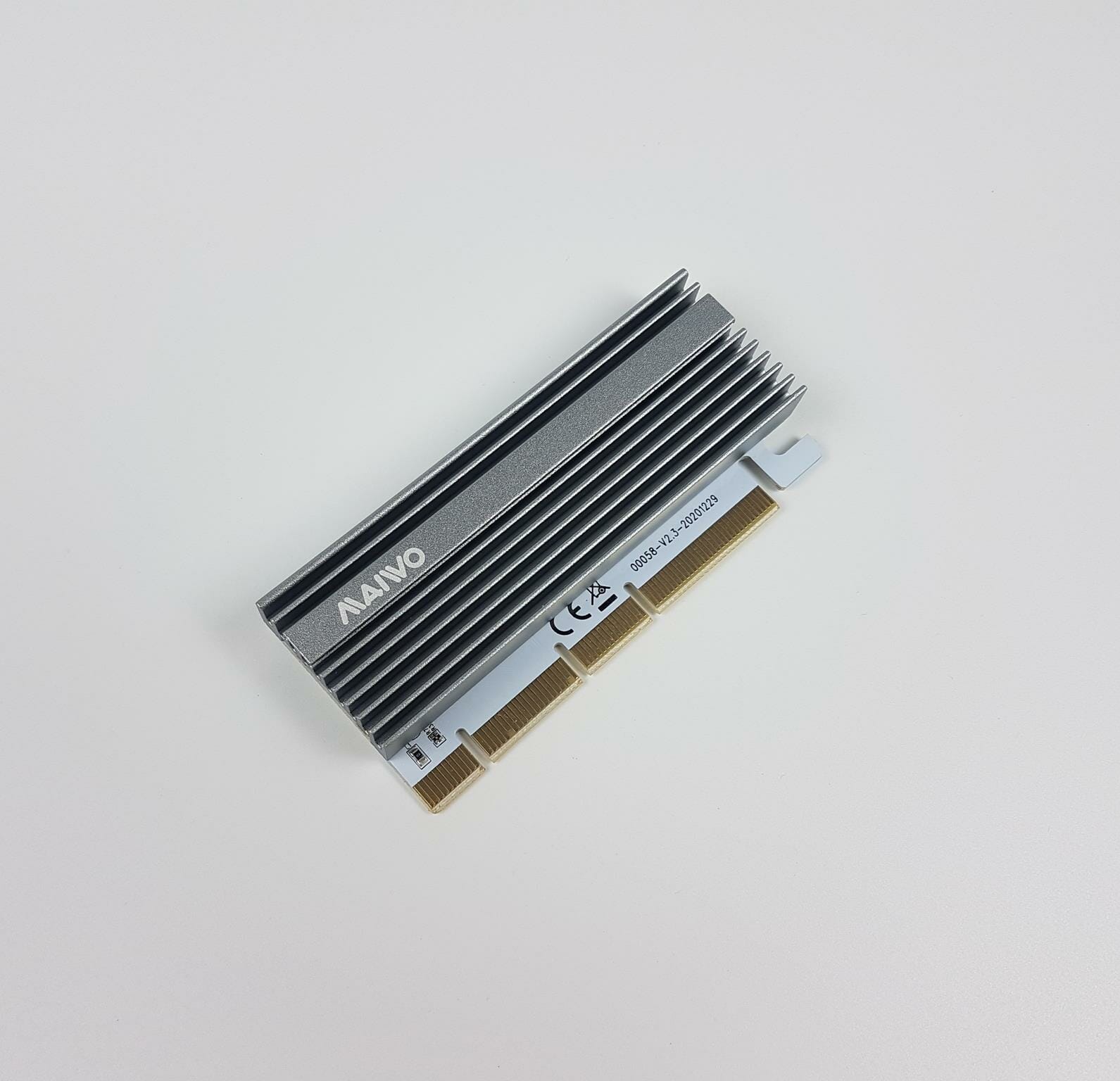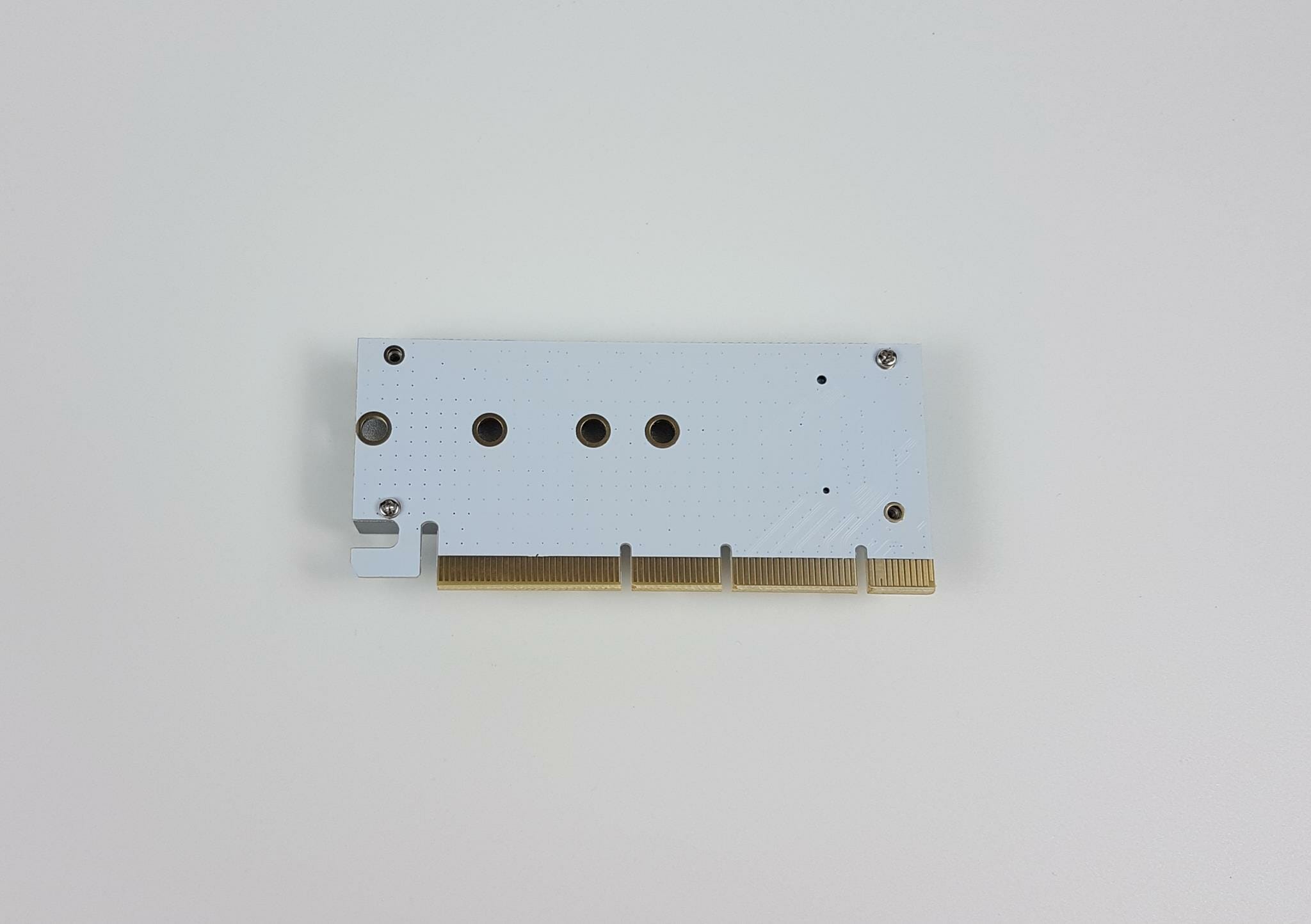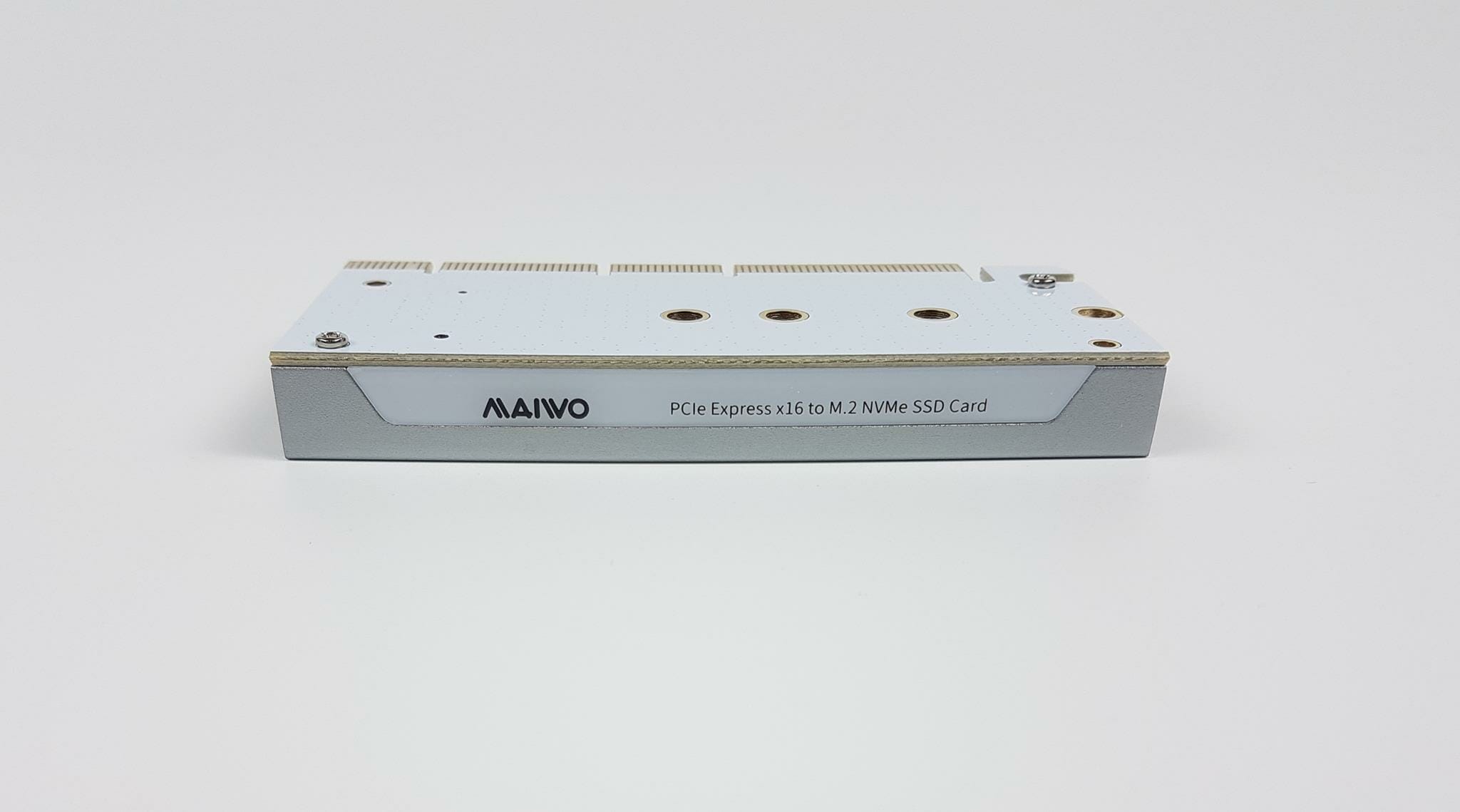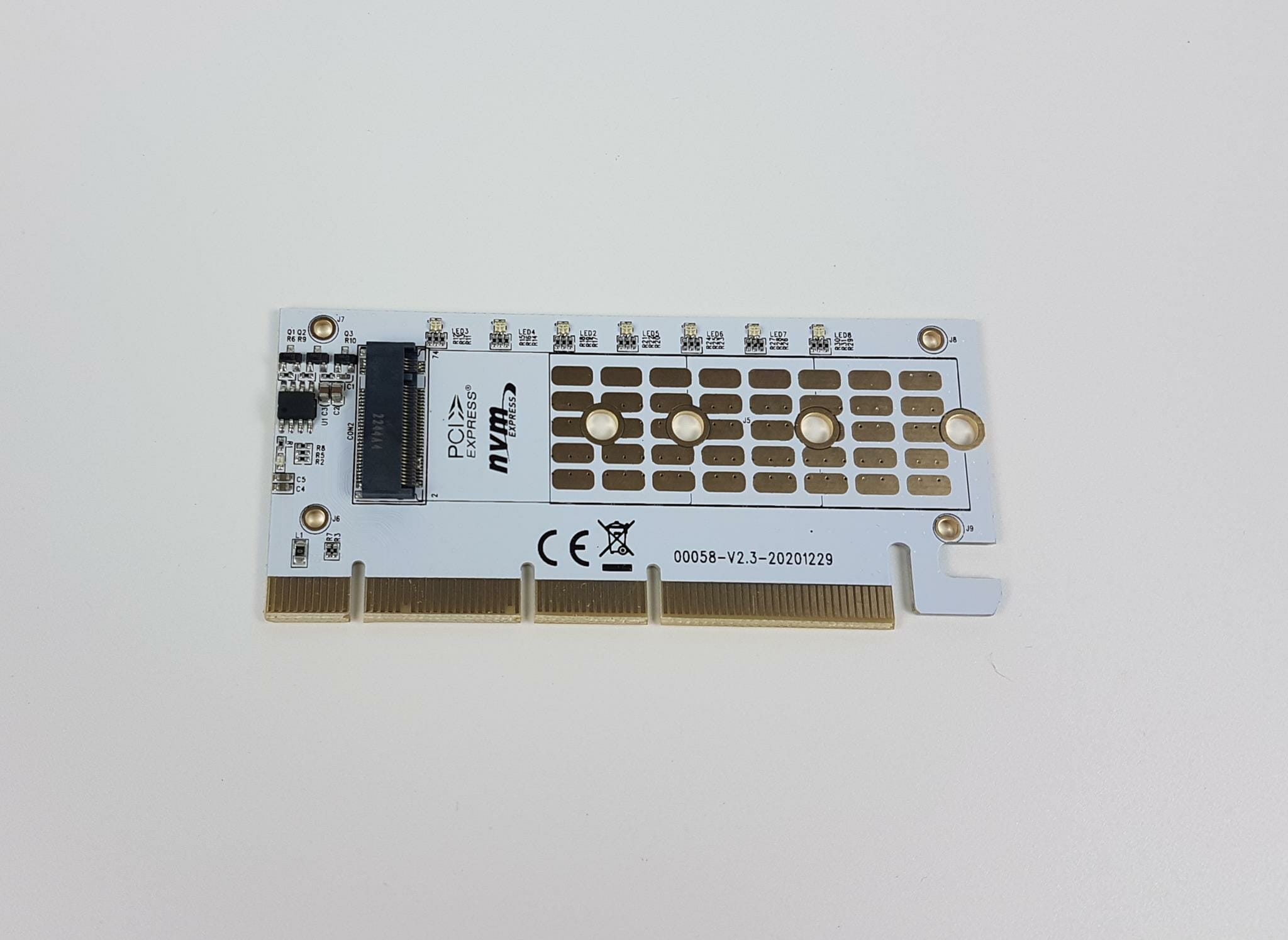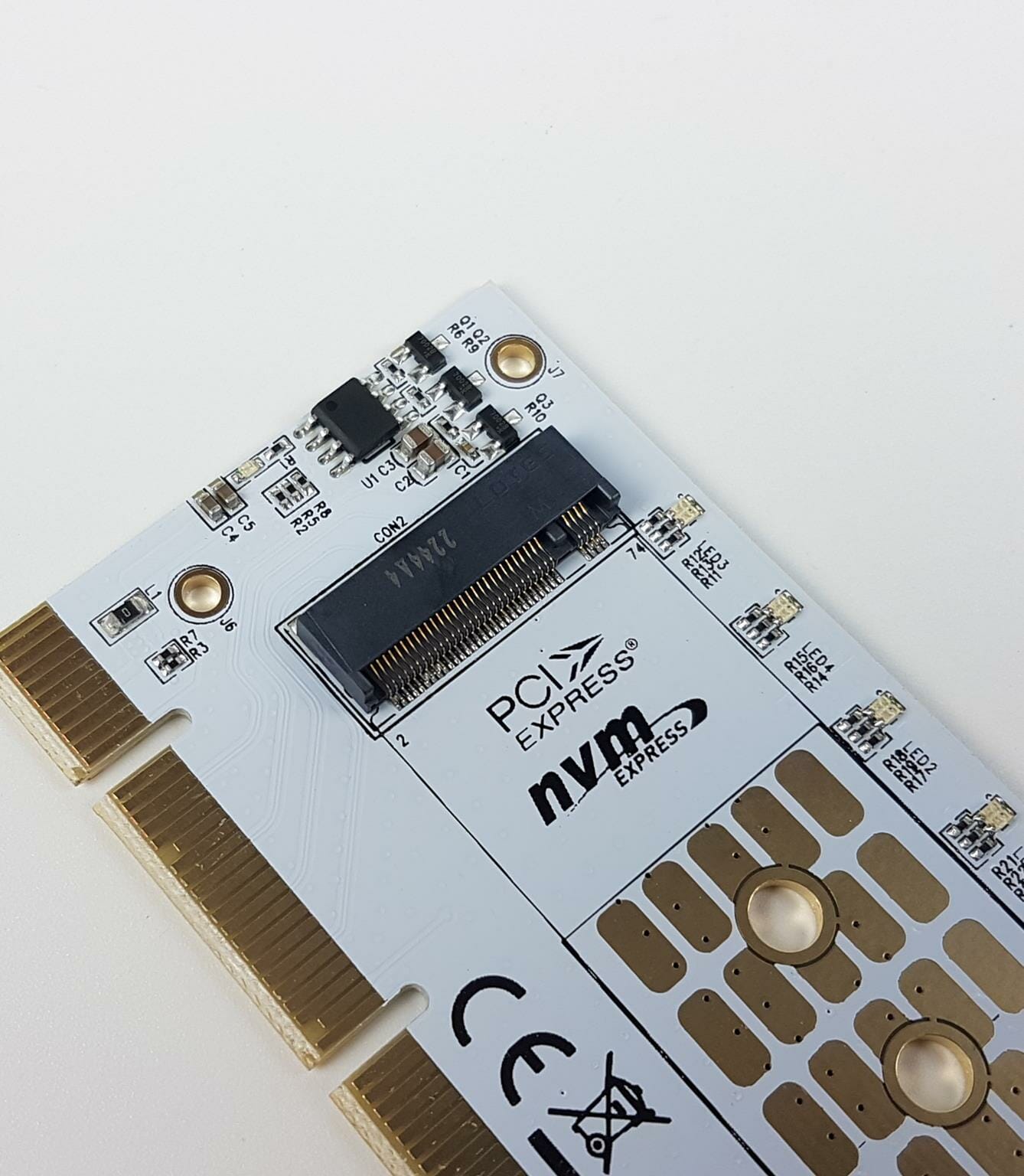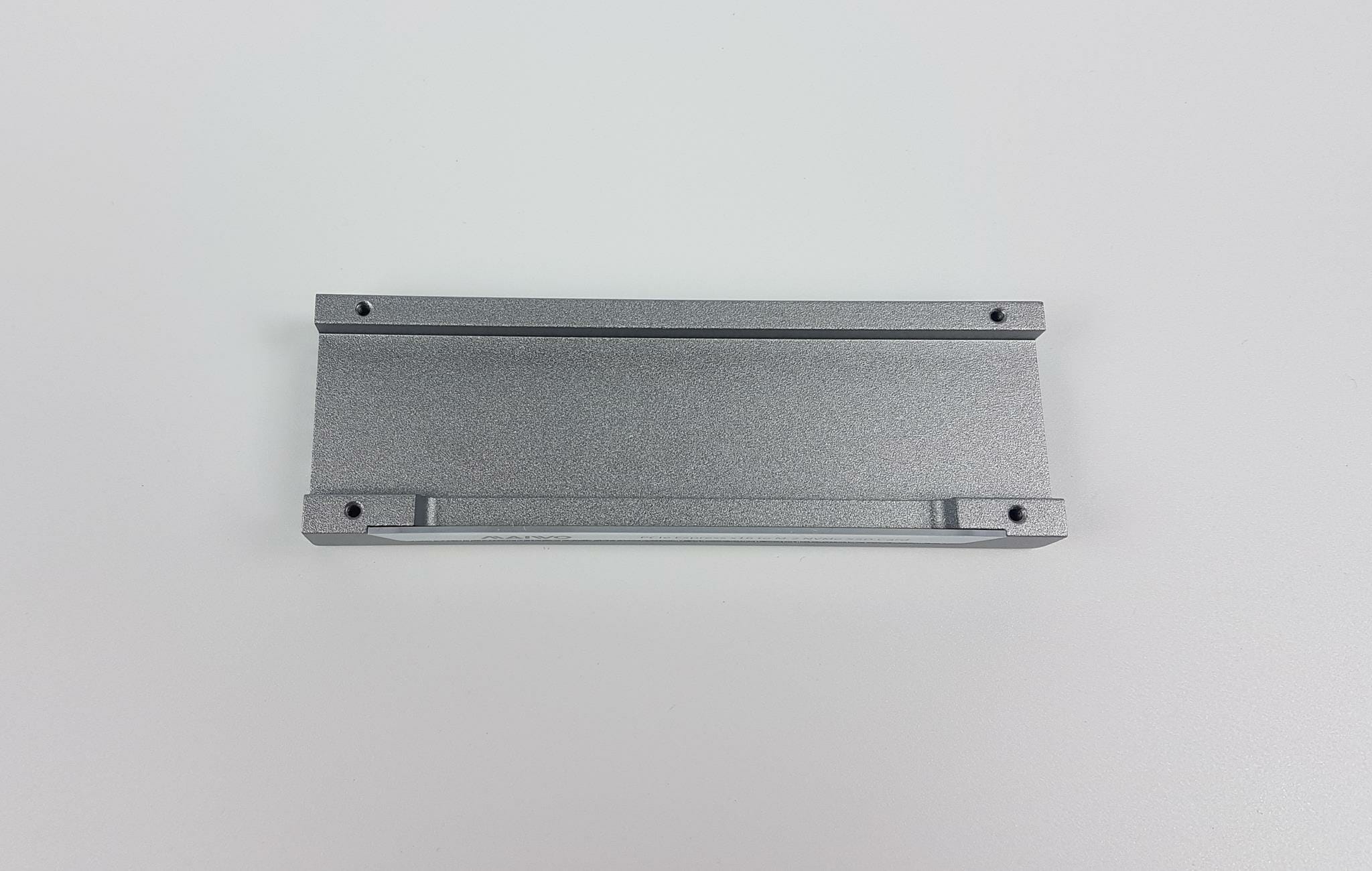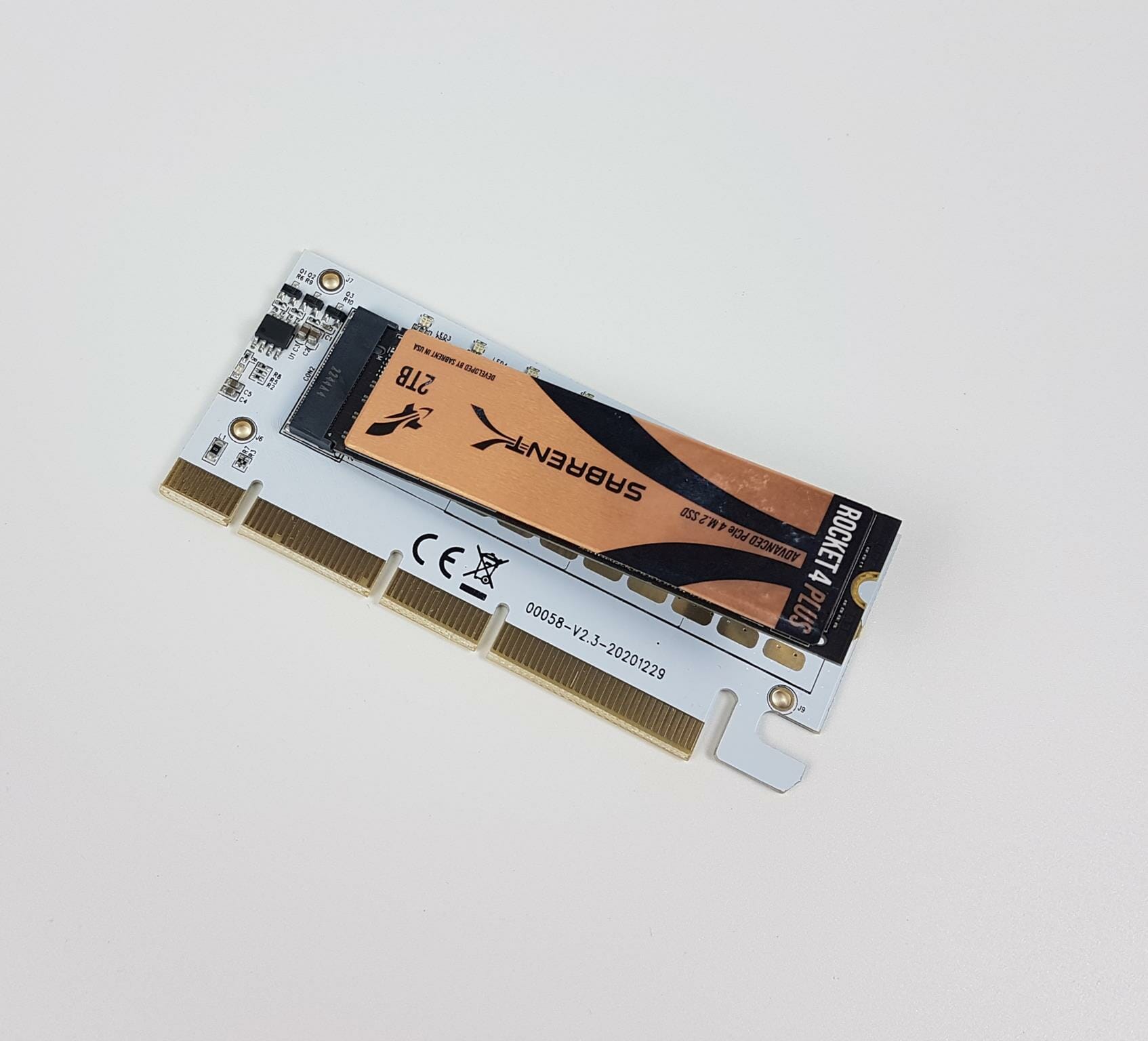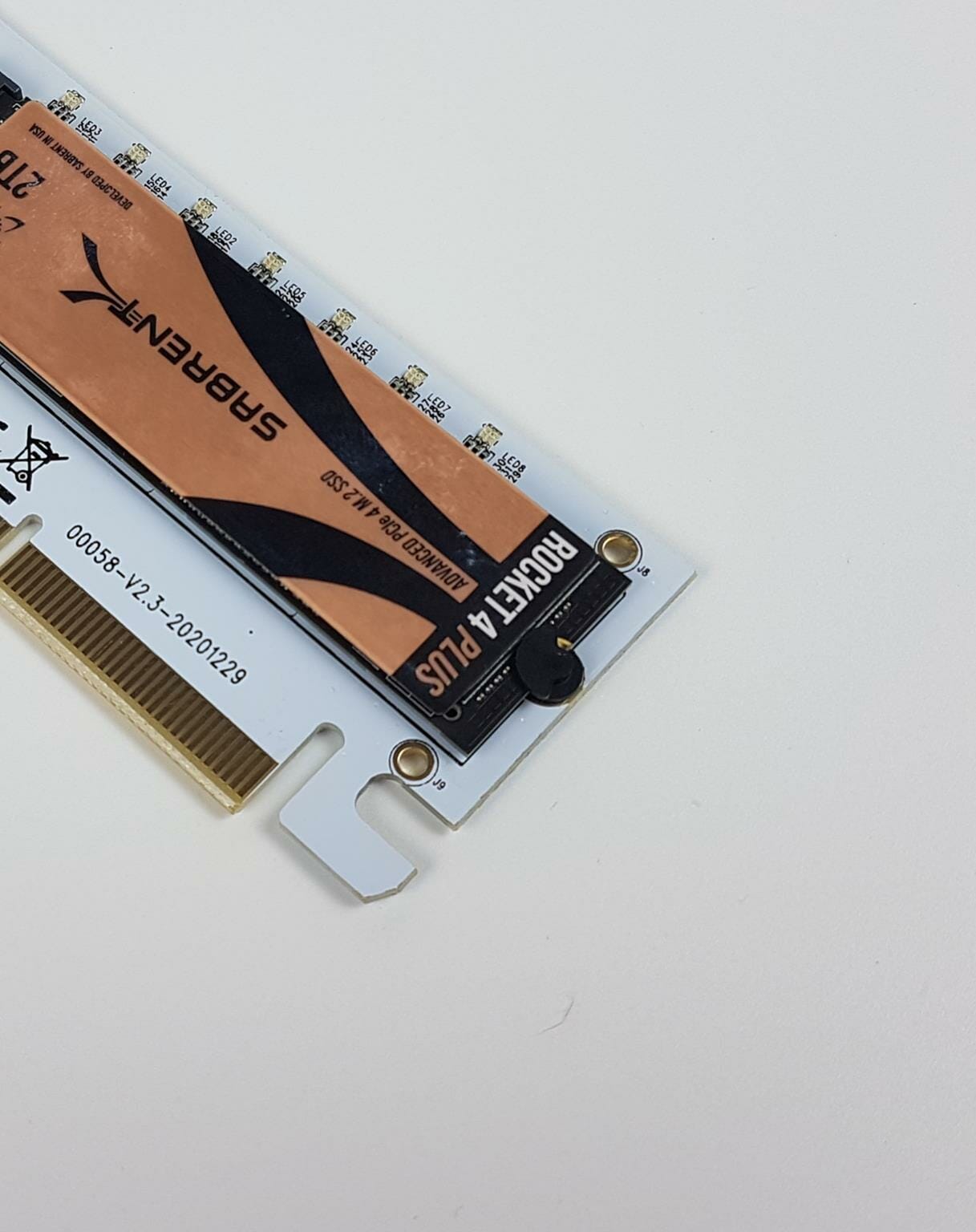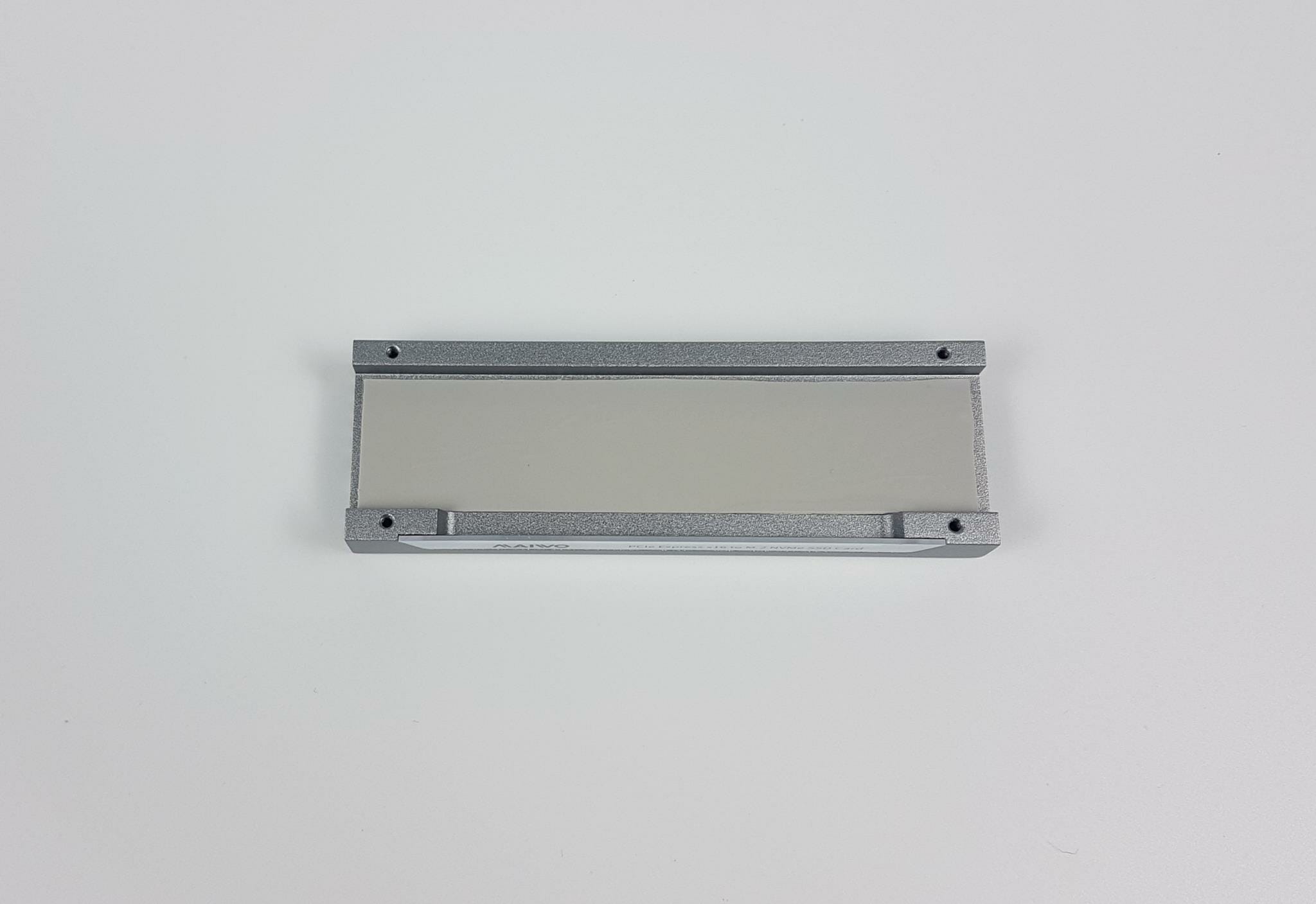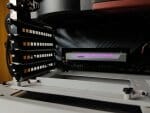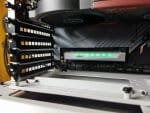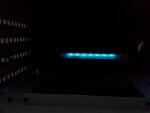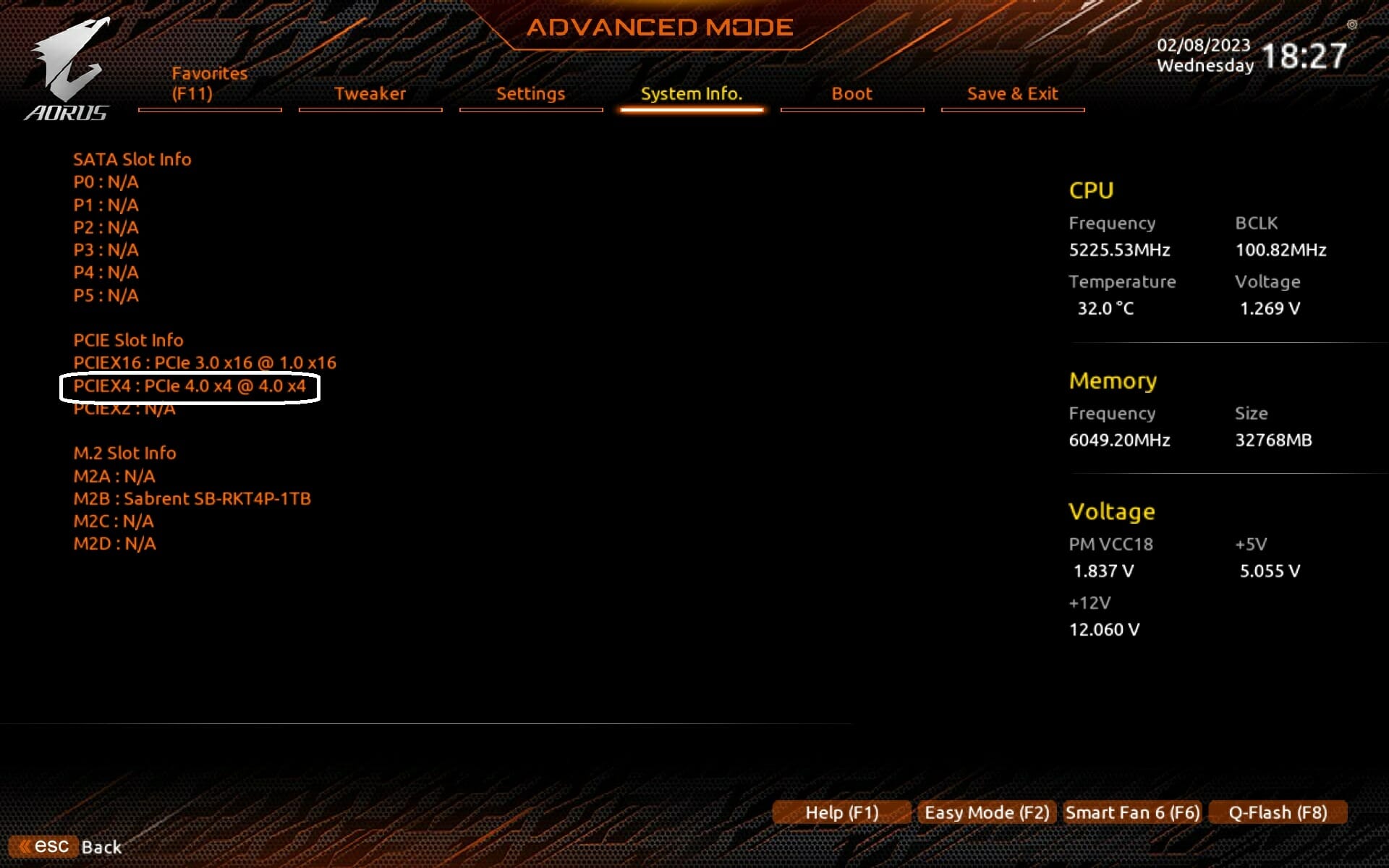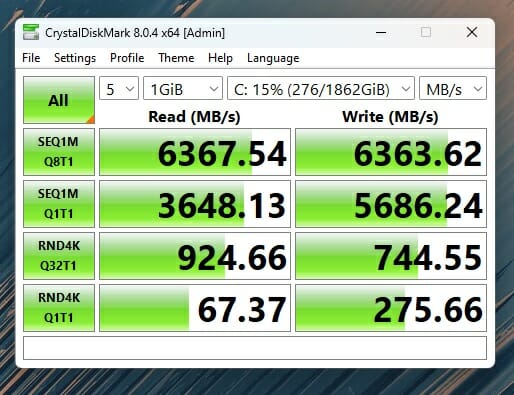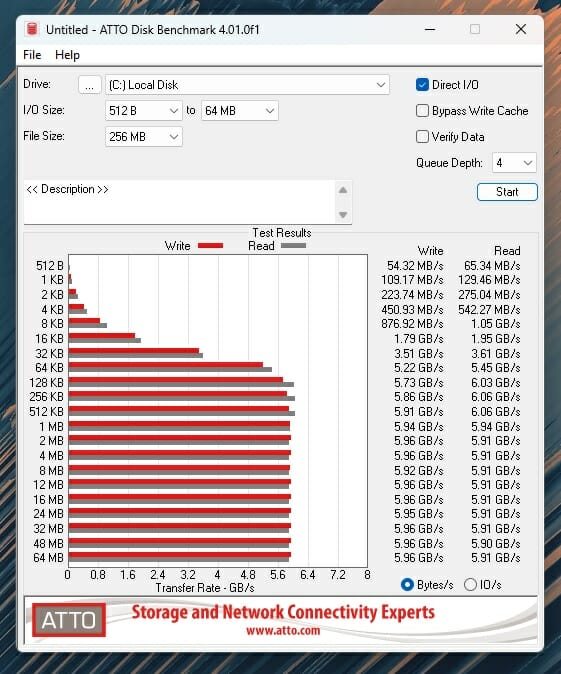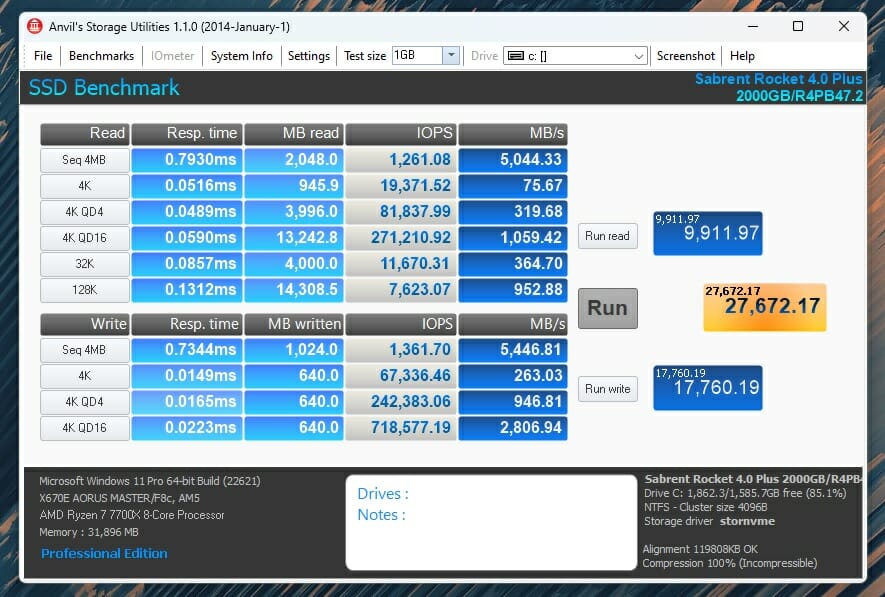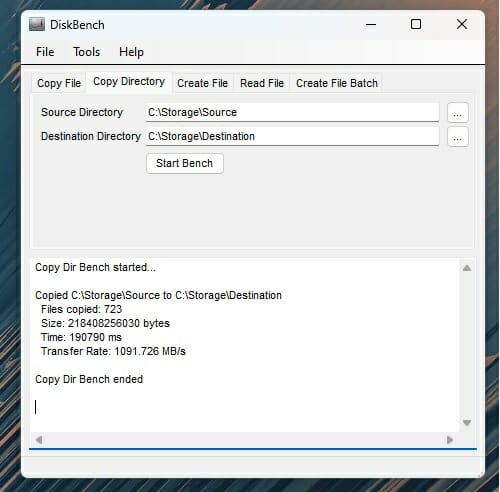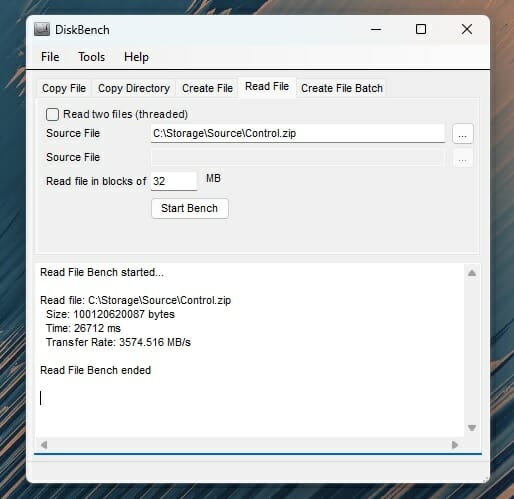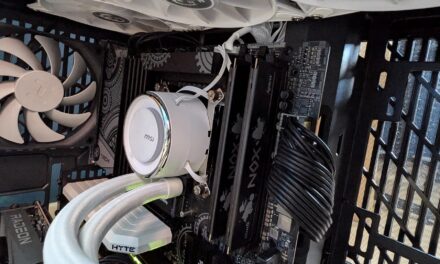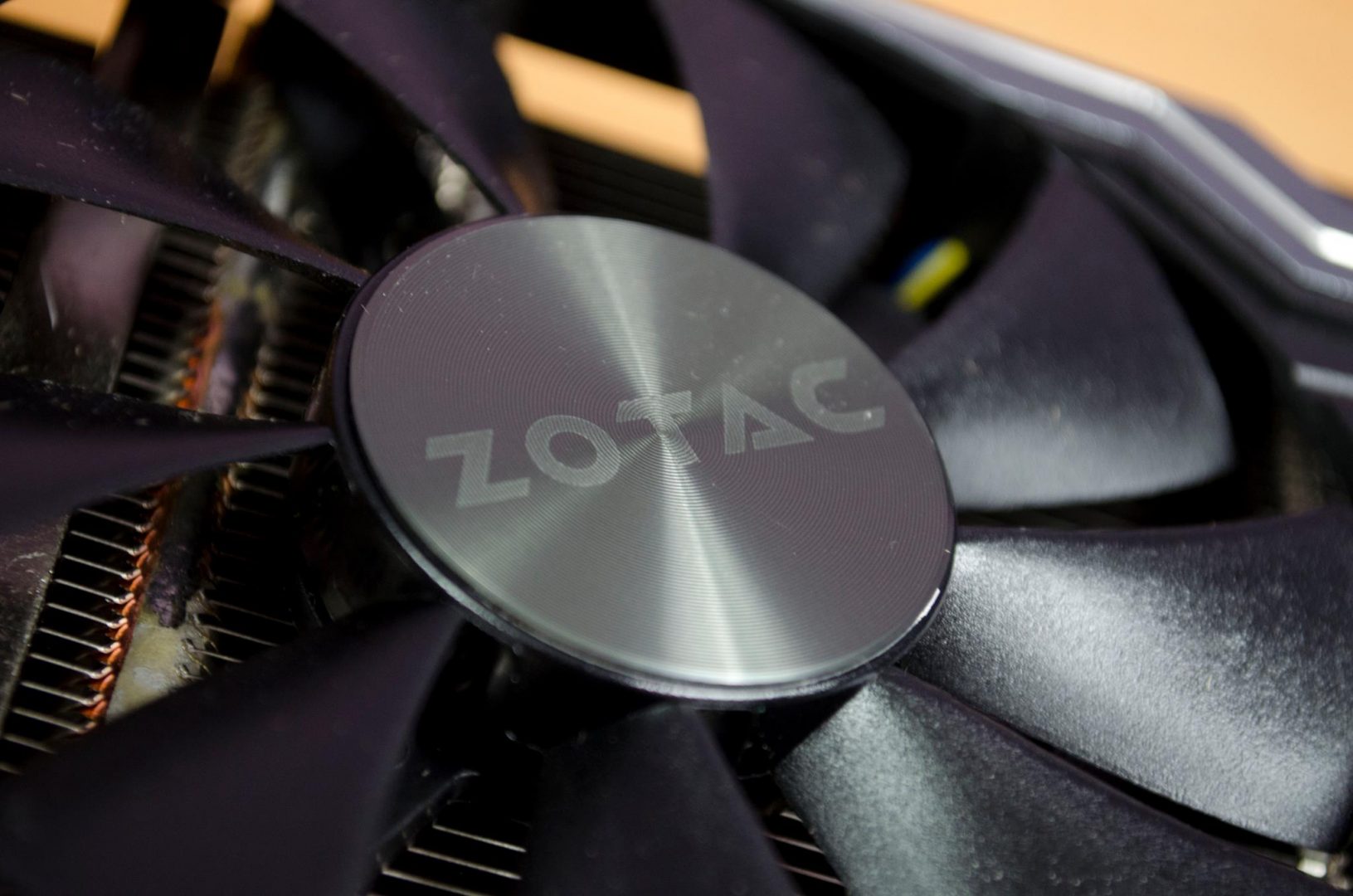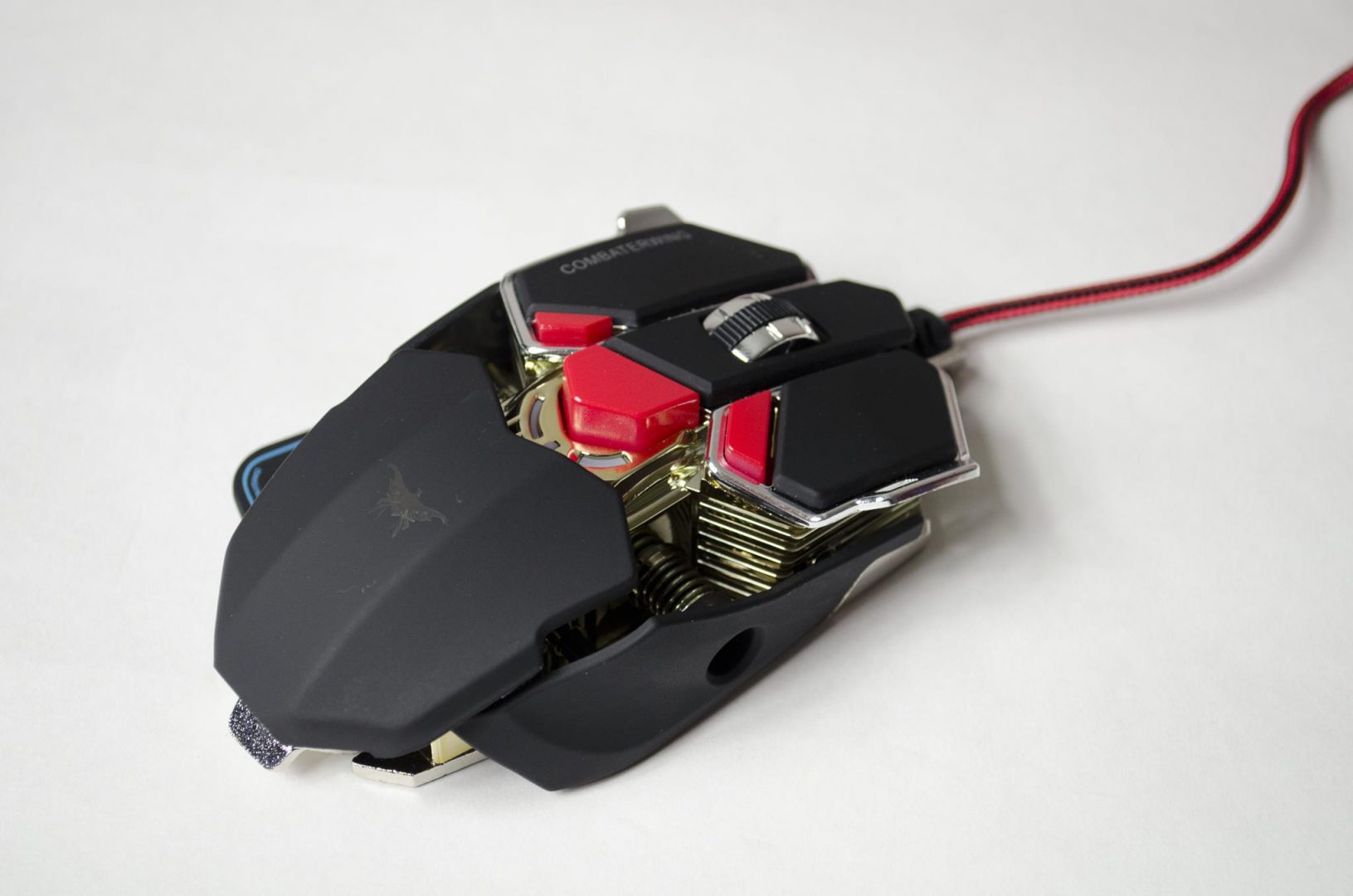
MAIWO KT058 RGB PCIe x16 to NVMe Adapter Card Review
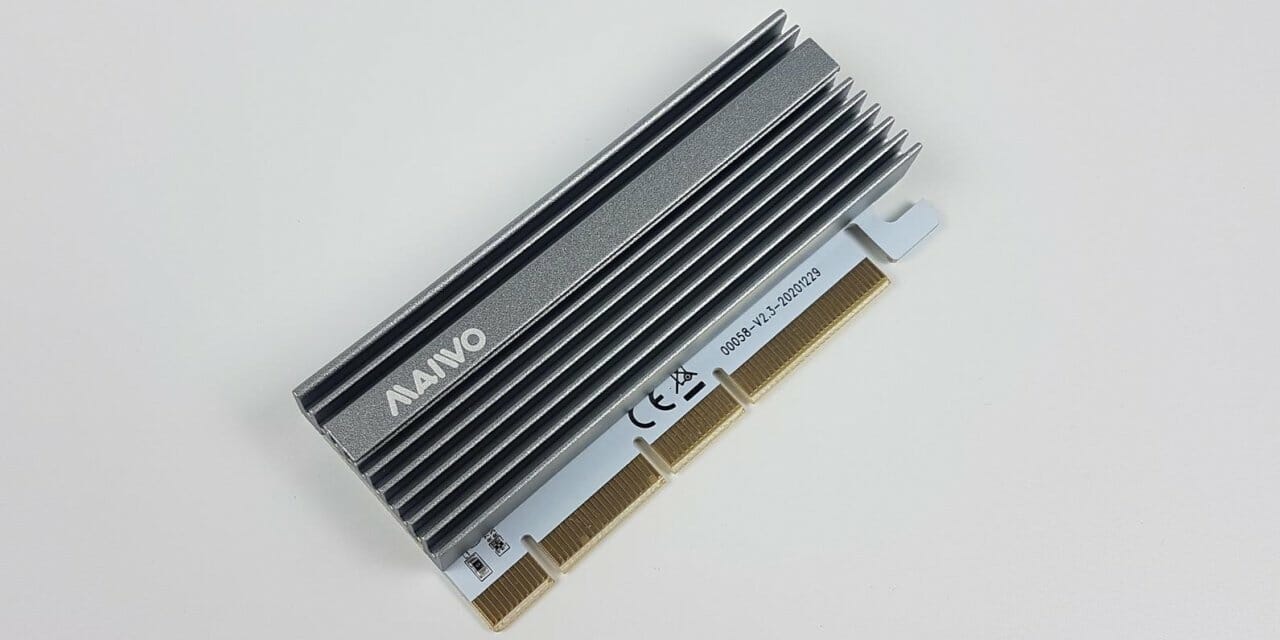
Introduction
We are testing KT058 RGB design PCIe x16 to NVMe SSD expansion converter from MAIWO. This accessory allows users to install high-speed NVMe SSD onto this expansion card and utilize a spare PCIe x4 slot for a fast storage solution. This would come in handy when we have limited M.2 ports and would want to add more storage. This product comes in two versions. KT058 is an RGB version whereas KT058A does not have RGB LEDs.
Its features are:
- RGB design: RGB light will changes different colors when stand by
- Interface: PCIe3.0 x16 to M-key NVMe, compatible for PCIex4/x8
- Heatsink aluminum casing
- Exclusively Designed for Speed : Up to 32Gbps with PCI Express 3.0 x4, 3200+MB/s read and 1500+MB/s write.
- 2 pcie adapter Support PCIe x4 x8 x16 slot for Windows 7/8/10 & Linux
- Applicable to sizes 2230 2242 2260 2280 M-Key NVME SSD, NO support for PCIe protocol AHCI SSD.
- EXCELLENT HEAT DISSIPATION: The copper bars with holes on the PCBA board with the aluminum alloy case can ensure a perfect cooling performance for the solid-state Drive.
- Stable Quality : M-KEY High-quality with elastic connector makes the contact more stable, intelligent LED indicator
Before moving on, it is worth mentioning that this expansion card is PCIe4x4 interfaced and 32Gbps is not the bandwidth limitation but 64Gbps is.
Product: MAIWO NVMe SSD to PCIe x16/x8x4 Expansion Card
Price: MSRP $15. Listed NewEgg price is $10 [At the time of the review]
MAIWO KT058 RGB PCIe x61 to NVMe Adapter Card Specifications
Closer Look
This product is shipped inside a transparent container. There is an orange color MAIWO label in the center.
The features of card are listed on the back of main packing box. A serial number and model number label is there as well.
MAIWO has provided:
- 4x Screws
- 3x Silicon Connector
There is a gray color thermal pad that seems to be 0.5mm thick. This thermal pad is prone to tear so handle it with care. I wish MAIWO had provided extended covers on this pad for easy handling.
There is also a screwdriver provided with the product so that users would not worry about anything.
MAIWO has provided a QC paper and a user manual as well.
The dimension of this card is 98x44x12mm (LxWxD). This product has a silver and white color finish which looks elegant in person. We can see the exposed PCB above the PCIe connector. This card has compatibility with:
- PCIe x16
- PCIe x8
- PCIe x4
The logical interface of this card is x4 PCIe lanes. Hence you should expect a full bandwidth provision which is subject to the design of the motherboard. By limitation we mean, sharing the bus of that slot with any other sub-component. MAIWO branding can be seen on the top left side of heatsink. It has a layered design which acts as a heatsink to transfer heat. This is a passive cooling solution.
Looking at back side of card, we can see 2x screws on two corners. Two mounting holes don’t have screws. Rest of the screws are in a transparent container as shown above. Removing these would remove the backside top cover and the card will be opened for preparation.
The RGB illuminated area has a diffuser with MAIWO branding and description text of this product.
We have a white color PCB. This adapter plate has a thickness of 1.66mm. We can see golden color contact points on M.2 SSD tray. There 4x RGB LEDs on top. These would cycle colors during operation and users have no control over these LEDs. There is also a blue color LED towards left side. This LED is to indicate the SSD use. It will blink fast during read/write on the SSD and will remain off otherwise. This card can house SSD of form factor:
- 2230
- 2242
- 2260
- 2280
This card can house only M-Key NVMe SSDs. Keep that in mind before buying this product.
There is a silver color heatsink with an inset on the inner side. This is where the thermal pad will be placed and it will face SSD on the plate.
SSD Installation
We have used Sabrent Rocket 4 Plus NVMe 2TB driver for testing. This is a PCIe Gen4 drive. This is a dual-sided design meaning, this SSD has components on both sides of the PCB. Connect the SSD to the M.2 NVMe M-Key port.
Use a black color silicon connector to secure the SSD on the adapter plate.
Remove a protective cover from one side of the thermal pad and place the thermal pad on the inset area of heatsink. Next, peel off the protective cover from the opposite side of the pad and place the heatsink on top of the adapter plate. SSD should rest inside the inset area of the heatsink. The last step is to use 4x screws and connect the heatsink to the adapter plate. Installation is completed.
Here are some pictures of this card in action.
Testing
Below mentioned configuration is used for testing:
- AMD Ryzen 7 7700X
- GIGABYTE X670E AORUS MASTER
- XPG Lancer RGB 32GB 6000MHz CL40 Kit
- Noctua NH-U12S chromax.black
- Colorful GeForce GTX 1050Ti 4G iGame [or Display]
- Sabrent Rocket 4 Plus 2TB NVMe SSD [For OS and Software]
- be quiet! Straight Power 11 850W Platinum PSU
We can see that the card was picked up by the motherboard and listed at PCIe 4.0 x4 running at 4.0 x4. This is somehow listed as PCIE 3.0 x4 on their website. The Rocket 4 Plus 2TB NVMe SSD is rated for up to 7000MB/s sequential read and up to 6600MB/s sequential write. The maximum bandwidth that we would expect from PCIe4x4 is 64Gbps (4x Lanes will use 8GB/s). Keep that in mind. That would mean we will never get anything above 6400MB/s theoretically.
Please make a note that we did not reset the SSD before using it on this expansion card. The SSD was 15% filled when this testing was done. Since this would differ from the original test results from M.2 port testing, we are not showing any comparison. It is clear that without a reset, a performance drop would be present that would not be accurate.
Above picture shows CrystalDiskMark run.
We are seeing a similar result as from CrystalDiskMark.
Anvil storage test has shown good performance on this connection with a nice overall score.
Next, we ran real-world data copy tests using Disk Bench. We prepared a 203GB size folder including compressed files and folders. There is a 97GB compressed file as well in that folder.
Average transfer rate comes to 1091.726MB/s. It took 3.17 minutes to complete the transfer of 203GB size folder.
A compressed file of 97GB was read at an average speed of 3574.516MB/sin 26 seconds.
Thermal
We set up CrystalDiskMark to run sequential read and write runs for consecutive 9 minutes. We saw a maximum temperature of 71°C at an ambient of 21°C.
Conclusion
We have tested the KT058 RGB design PCIe x16 to NVMe SSD expansion converter from MAIWO. This product is essentially a PCIe adapter card that allows users to install M.2 M-Key NVMe SSD on this card and connect it to a PCIe slot on your motherboard. It is a handy dandy accessory for a rapid expansion of storage capacity at high speed. This card has a dimension of 98x44x12mm (LxWxD). It comes in RGB and non-RGB variants. KT058 is the RGB version whereas KT058A is the non-RGB version.
This product has a white color PCB and a silver color aluminum-made shell to act as a heat transfer medium. This card can house M-Key M.2 type SSD only over NVMe interface in form factors of 2232, 2240, 2260, and 2280. SATA M.2 and B-Type M.2 SSDS are not supported. This card is not compatible with the PCIe x1 interface either. Take note of this when planning on buying an expansion card.
One thing I would like to highlight is that MAIWO has listed this card as PCIE 3.0 operating at x4 or PCIE3x4. This connection has a bandwidth of 32Gbps. However, this is incorrect since this card has a full-length connection over PCIE4.0 meaning this card is PCIe Gen4 design, not Gen3, and connecting it to a PCIe4x4 connection, the bandwidth would be 64Gbps. We have shared this observation with MAIWO and they have informed that this card is indeed PCIe Gen4x4 and are doing correction at their end.
MAIWO has provided a single thermal pad that seems to be having a thickness of 0.5mm. This thermal pad is highly flexible and can easily be torn so handle it with care. One side of this pad has a thick protective cover whereas the opposite side has a thin protective cover. Peeling off thin cover is challenging as one could easily tear the pad itself during the process. I would have loved to see MAIWO using thicker covers on both sides. Else, the extended length of these protective covers could have been provided for easy handling.
MAIWO has provided a complete solution. There is a screwdriver included as well. The SSD is secured using a black color silicon connector. We set this card up using Sabrent Rocket 4 Plus 2TB NVMe SSD. This SSD has dual-sided components. MAIWO has not provided any instructions or hint about the supported thickness of SSD.
Note: We have used a 15% populated disk in this testing. It was not reset before testing this card. Since this would produce different test results compared to testing reset SSD on M.2 port, we are not showing any comparison.
This expansion card is listed at USD 10.00 on NewEgg at the time of this writing. MSRP is mentioned to be USD 17. MAIWO is providing only a 30-day warranty period. I was expecting a minimum of a 1-year warranty. The performance of this adapter card is right on the money. We have used a Gen4 drive which is capable of doing 7000MB/s in sequential reads and 6600MB/s in sequential writes. We hit the 64Gbps limit of the connection. The card is definitely doing its job and doing it in some style. The RGB colors look nice though there is no provision to turn the LEDs off. There is also a blue color LED indicator on this card.
Thanks to MAIWO for the test unit.

















